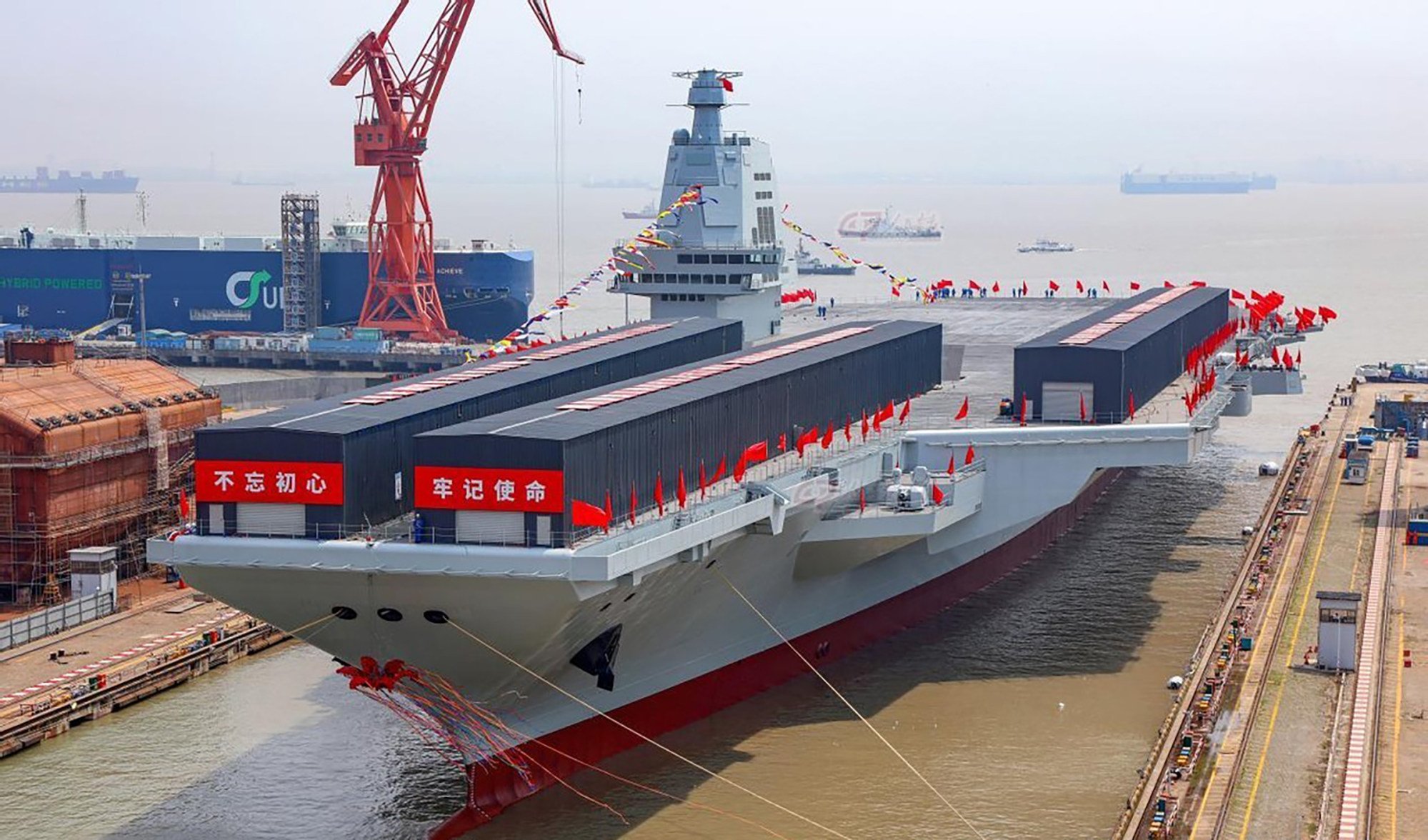
China’s advanced mast technology could give Fujian aircraft carrier the edge over USS Gerald R. Ford
- Scientists have revealed details of ‘all in one’ mast – technology they say will have a big impact on warfare in the future
- Their comparison of Chinese and US masts suggests the Fujian system could be well ahead of the USS Gerald R. Ford’s
The US Navy’s newest aircraft carrier is also bigger than the Fujian and nuclear-powered, while the Fujian relies on conventional power.
But there is another point of difference: their masts.
The Ford’s “island” – or command centre – has a towering mast with an array of antennas and sensors. However, those antennas go almost unseen on the Fujian.
The principles and innovations behind this “multifunctional integrated electronic mast” were recently unveiled in a paper by scientists from the Nanjing Research Institute of Electronics Technology who were involved in developing the technology.
The team, led by engineering scientist Li Shengyan, believe this technology will have a significant impact on warfare in the future, according to their paper in Chinese journal Shipboard Electronic Countermeasure last month.
Their comparison of the Chinese and US masts suggests the Fujian system could be well ahead of the Ford’s.

Modern warship masts house antennas with three main functions – radar, electronic surveillance and electromagnetic suppression – that generally require antennas of different shapes.
On the Ford, the antennas gather signals that are synthesised and processed by a computer, using the first generation of electromagnetic sensor integration technology, according to the paper.
The antennas are exposed to the elements, making them vulnerable to weathering and performance degradation due to interference from other equipment.
This traditional mast configuration is also detrimental to electromagnetic stealth, making the ship visible to enemy weapon systems from a distance.
China’s navy starts open water trials for next-generation frigate
According to Li’s team, China has progressed to the second generation of electromagnetic integration technology.
It means a single antenna takes multiple roles – radar scanning, intercepting encrypted communications, and launching electronic warfare attacks such as jamming and suppression.
One antenna can be easily encased in the island and connected to a computer via a high-speed optical fibre, so the operator can adjust the equipment and perform tasks by touching a screen.
Li’s team from the Nanjing institute, which has a focus on military radar research, said there had been many challenges in developing the technology.
One was the huge volume of data generated by the highly integrated mast in a combat scenario – far more than a traditional antenna that mainly transmits in one direction.
An optical fibre that can transmit large bandwidths of data while maintaining stability in high-temperature and electromagnetic environments is needed to deal with that. There is also the challenge of processing that data in a timely fashion.
To address these issues, Chinese scientists and engineers working on this technology have used general-purpose CPUs and developed specialised chips – which can handle both electronic and optical signals – to expedite data processing.
The South China Sea and Taiwan may be twin powder kegs, but which is riskier?
The technology allows seemingly simple antennas to perform complex functions such as a jamming operation.
To do that, the system surveys the electromagnetic space around the ship, identifies high-threat targets then adjusts the antennas so they can intercept signals with high precision.
After analysis, a suppression signal is generated by computer and transmitted to the antenna array, which emits electromagnetic waves that form a highly focused beam to suppress the target.

“It is expected that in the near future, more equipment of this type will appear on shipborne or airborne platforms,” Li’s team wrote in the paper.
The current integrated antennas are multifunctional, but they can only handle one role at a time.
Li’s team said they hoped to create an antenna array that can simultaneously perform radar scanning, signal interception and electromagnetic suppression, but noted there were significant challenges to overcome.
Two decades ago, a concealed antenna integrated electromagnetic mast was used on the US Navy’s San Antonio-class amphibious transport dock in what was seen as an experiment.
A similar mast design was later used for the futuristic-looking Zumwalt-class destroyer, but it was reportedly deemed too expensive and unnecessary and traditional masts continue to be used for most US Navy vessels – including the USS John F. Kennedy aircraft carrier that is under construction.


